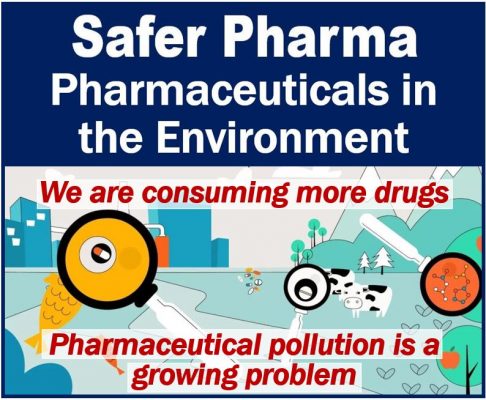The Safer Pharma campaign warns that pharmaceuticals in the environment are a serious threat to humans. So far, campaigners can identify 600 different pharmaceuticals and their metabolites in the environment globally.
The term ‘metabolite,’ in this context, refers to drugs that the body has metabolized. For example, when a substance goes through the human liver, it changes slightly because the liver ‘metabolized’ it. Many drug metabolites are still active compounds.
Pharmaceuticals in the environment get there through soil, sludge, water, and organisms. They enter the environment at every stage of their life cycle. Pharmaceuticals build up in fish, farm animals, and vegetables. They can also end up in our drinking water.
The Safer Pharma campaign aims to protect the environment. Specifically, protect the environment from pharmaceutical pollution at every stage of their life cycle.
Health Care Without Harm
HCWH Europe is the coordinator of the Safer Pharma campaign. HCWH stands for Health Care Without Harm. It is a non-profit European coalition of healthcare professionals, local authorities, hospitals, and healthcare systems. The coalition also includes environmental organizations, health organizations, and research/academic institutions
They aim to bring the voice of doctors and other healthcare professionals to the European policy debate. Especially debates about the environment.
The European Parliament and other national bodies set down the laws for, for example, good manufacturing practice (GMP). GMP refers to a system to ensure that drugs, foods, and medical devices are produced according to quality standards.

Safer pharma explains
How do pharmaceuticals get into the environment? They do so during production, consumption, and disposal.
In other words, medications get into the environment while companies make them and when people consume them. They also pollute our environment when we get rid of them.
Safer Pharma says that companies must aim for zero discharge from their manufacturing facilities.
Drugs also pollute the environment through human excretion. In other words, when we go to the toilet, we pollute the environment with pharmaceuticals and their metabolites.
According to the European Commission’s Executive Agency for Health and Consumers, humans excrete from 30% to 90% of a medication’s oral dose in urine. We are talking here specifically about a medication’s active substance.
Animal excretion is also a contributor.
Medicines get into the environment through human and animal excretion via wastewater and runoff respectively.
Improper disposal
Improper disposal means getting rid of a medicine you never used by flushing it down the toilet or pouring it down the sink.
Pharmaceutical pollution also occurs because of improper disposal. Wastewater treatment plants cannot destroy or remove pharmaceutical completely.
Scientific research sites such as PeptidesUK.com, offer information on how to dispose of their products in a way that is safer for the environment.
Safer Pharma adds:
“Consequently, pharmaceutical residues can re-enter terrestrial systems, spread to surface waters and agricultural lands, and can ultimately end up in drinking water, and build up in vegetables and fish.”
Safer pharma warning to humans
Have you ever wondered whether pharmaceutical pollution might be a threat to your health?
Medications and their residues enter our water supply. They subsequently spread to farmland and the water’s surface. In many cases, they end up in drinking water and accumulate in fish and vegetables.
We may be unintentionally exposing ourselves by consuming contaminated food and water.
Pharmaceuticals in relatively low levels in the environment can harm animals and other organisms. This raises questions about how we might be affected.
What happens to our health after years of exposure to low concentrations of pharmaceuticals?
According to Safer Pharma:
– If you are a pharmaceutical manufacturer, this is what you can do.
– Patients can help in the following way.
– If you are a doctor, this is how you can help.
Video – Safer Pharma Campaign
This Health Care Without Harm – Europe video talks about pharmaceuticals in the environment.

